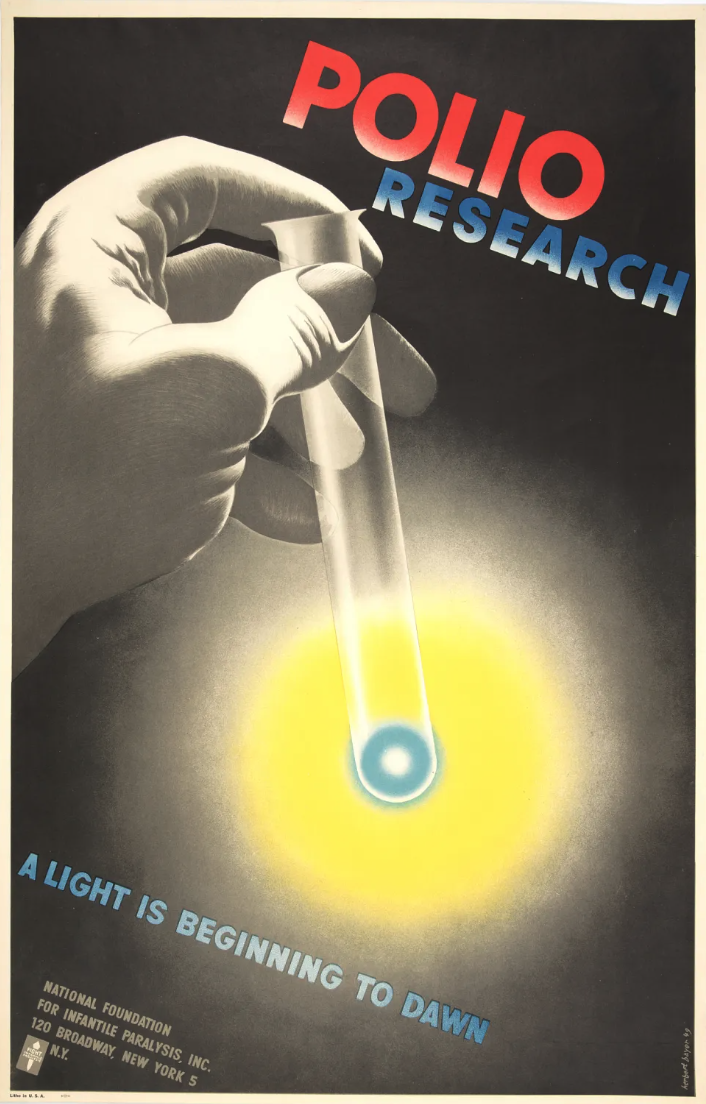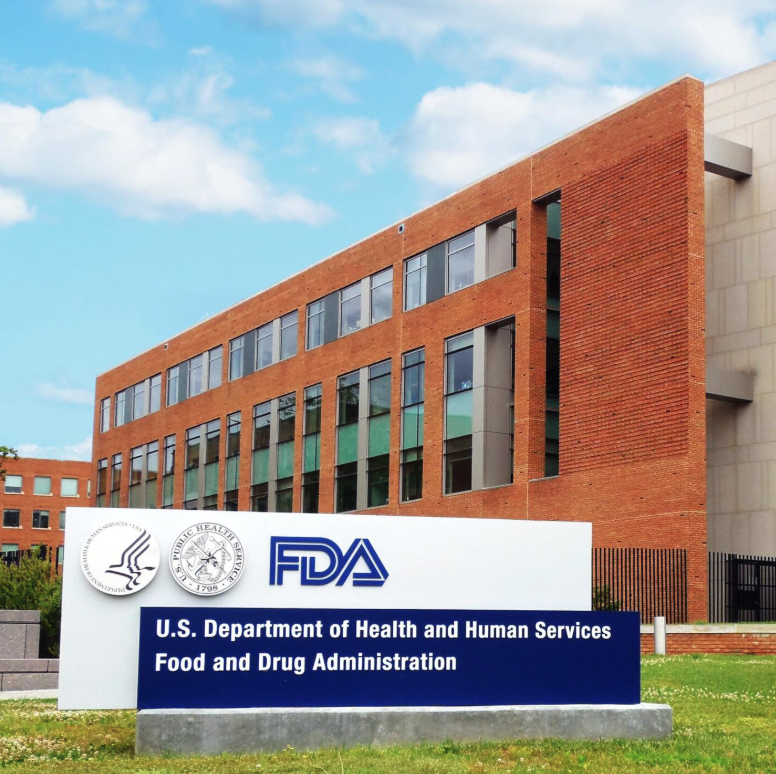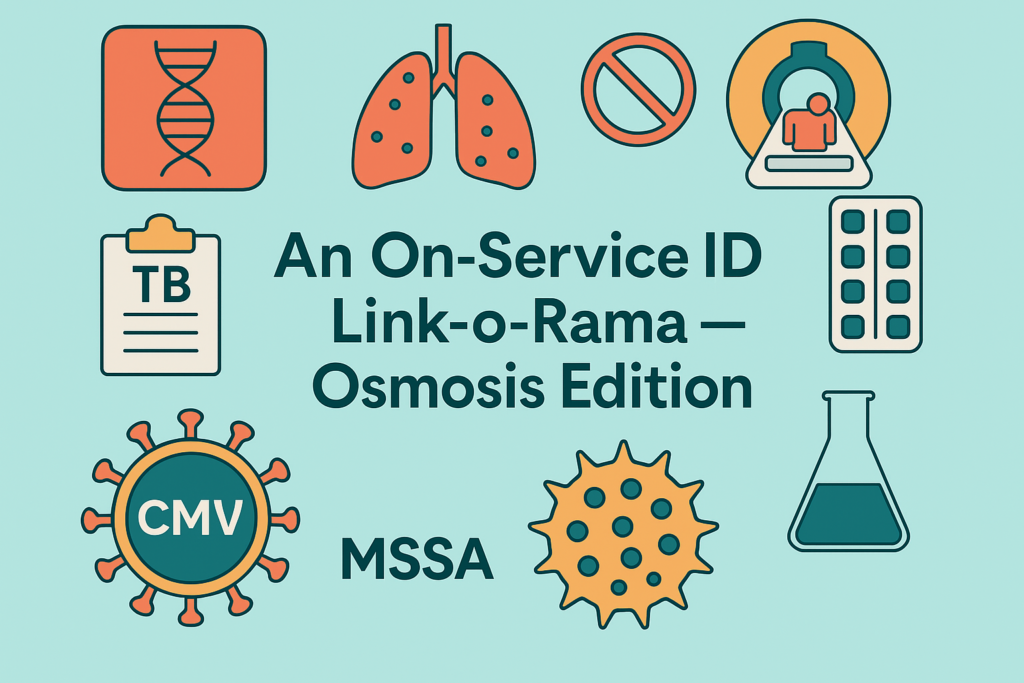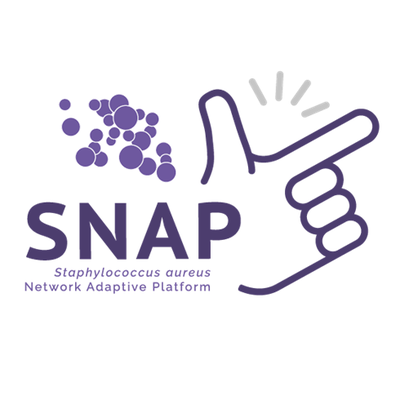An ongoing dialogue on HIV/AIDS, infectious diseases,
June 12th, 2025
Why the Sudden Firing of ACIP Members Should Put Every Clinician on High Alert

Public health poster, Herbert Bayer, 1949.
There are certain irrefutable verities when, like me, you’re an infectious diseases specialist married to a pediatrician. Here are our top two, which are deeply interrelated:
-
Infectious deaths in children, or severe illnesses that lead to lifelong disability, are more devastating than similar events in adults. Each such case in a baby or child is so very tragic. I’ll again quote Dr. Burton Grebin: “To lose a child is to lose a piece of yourself.”
-
The success of vaccines in preventing those deaths and illnesses stands as one of the great accomplishments of modern medicine.
Seen a case of Haemophilus influenzae meningitis in a kid lately, one so severe they have permanent deafness or other neurologic sequelae? The same bug causing epiglottis, forcing a child to lean forward, afraid to talk and struggling to breathe? Bad rotavirus diarrhea in a baby, leading to that awful look of sunken eyes and the clinical descriptor, “floppy”? Whooping cough in an infant who can’t catch their breath? Or measles complicated by pneumonia or encephalitis that required hospitalization?
Thanks to vaccines, even busy clinicians rarely if ever see such cases today. As I’ve noted here before, if you combine the total number of cases of measles seen by my wife and me in our cumulative decades of practice, you’d fit that number on one hand, and have a couple of fingers left over. And we’ve witnessed first-hand the near disappearance of invasive disease from Haemophilus influenzae, severe varicella, and rotavirus disease.
It’s no wonder, then, that when the nomination of Robert F. Kennedy, Jr. to head the Department of Health and Human Services began circulating, my wife and I watched the proceedings with intense interest, and rising dread. I naïvely hoped that Sen. Bill Cassidy, a physician himself and ranking member of the Senate HELP Committee, would do the right thing and block the nomination, as he shared his concerns about Kennedy’s anti-vaccine views during the nomination process.
Alas, he did not block the appointment. In fact, he issued a statement explaining his support, citing Mr. Kennedy’s assurances that he would preserve the existing vaccine infrastructure:
He has also committed that he would work within the current vaccine approval and safety monitoring systems, and not establish parallel systems. If confirmed, he will maintain the Centers for Disease Control and Prevention’s Advisory Committee on Immunization Practices (ACIP) without changes.
Emphasis mine — because earlier this week, Kennedy announced the removal of all current members of ACIP. So much for those assurances. Yesterday, he replaced them with eight new members of varied backgrounds, some of whom clearly share his skepticism about the benefits of childhood vaccines.
His stated motivations for the firings, rife with misstatements and oversimplifications, reveal a profound misunderstanding of how ACIP works. It also provides a glimpse into Kennedy’s longstanding distrust of vaccine safety and efficacy.
Let’s be absolutely clear: ACIP was a group of unpaid vaccine experts who based their recommendations on clinical data, safety monitoring, disease surveillance, and cost-effectiveness. They were not shills for the pharmaceutical industry. They were not political actors. Their deliberations were public and open to commentary. For years, their work has been critically important in shaping policy and ensuring insurance coverage for vaccines in our byzantine healthcare system.
What policies will we get from the new panel? More importantly, what will be the health implications for our society? Time will tell — an ACIP meeting is planned for later this month, and their actions should be watched closely by pediatricians, ID specialists, and indeed all clinicians. Already, alarmist headlines predict dire health outcomes ushered in by this regime change, and many of us worry it will further undermine confidence in vaccines that are of critical importance to childhood health. We’ll see.
But one thing is certain: For anyone who expected that Kennedy would “maintain the Centers for Disease Control and Prevention’s Advisory Committee on Immunization Practices (ACIP) without changes,” this week’s events are a clear reminder that actions speak louder than words.
June 6th, 2025
How ID Doctors Get Paid, Part 3: The Grab Bag Edition

Get yours today.
If you’ve made it this far, congratulations! You’re now deep into the ID Reimbursement Rabbit Hole. Part 1 and Part 2 covered how ID doctors contribute immense value through patient care, stewardship, infection control, travel clinics — proudly fighting along the way for appropriate compensation as the “Loss Leaders” of the hospital.
(Did you get your emblazoned fleece vest yet?)
Before going on, however, I’d like to address the ongoing concern that discussing payment is somehow unseemly. That discomfort with discussing money is understandable — especially given the bloated costs of American healthcare and our field’s patient-centered mission, with care often delivered to people who are disenfranchised or stigmatized.
As a result, it’s very “on brand” for ID in particular to avoid these discussions. As my colleague Dr. Daniel Solomon put it when I floated the idea for this series:
It is tough to talk about money in some crowds. Especially (paradoxically) some ID communities. As much as I love our field, there is an overrepresentation of people in ID who seem to judge such discussions harshly.
Yep. But in defense, if we don’t talk about it, how can we expect things to change? Very much appreciate Dr. Alice Han’s comment in response to Part 2.
So let’s wrap up with Act 3 of the show, a miscellaneous grab bag of other areas for salary support.
7. Infusion services. Free-standing ID practices can offer infusion services, where patients can receive intravenous dalbavancin or daptomycin or remdesivir or you-name-it. Of course, this takes up-front investment in clinic infrastructure, deft administrative support to obtain prior approvals for expensive drugs, as well as purchasing and storing the medications. I’ve furthermore heard that the revenue is tightly tied to the cost of the drugs (dropping for many IV antimicrobial agents as they go generic) and the quality of a patient’s insurance.
Still, one ID doctor reached out to me a to share how much his patients appreciated the service — and how profitable it was for the practice. Even with declining drug margins, his nimble outpatient ID group leveraged infusion services to reduce hospitalizations and ED visits, which payers (and patients) appreciated, the former paying them to keep it afloat.
But if, like me, you work at a hospital, the outpatient infusion center is run by the institution. Most of their treatments are regularly scheduled immunosuppressants (for rheumatology, GI, neurology, etc.), chemotherapy (if a cancer center), and immunoglobulins. We occasionally bug* them for outpatient parenteral antibiotics, but none of the revenue flows back to the ID doctors.
(*See what I did there?)
8. Pharmacy. If a clinic or hospital provides “safety net” care to a sufficient proportion of people, they may be eligible to participate in the 340B pharmacy program. This allows pharmacies to purchase the medications at a discounted price, but charge the usual price to payers, with the difference set aside to cover the care of patients who are socially or financially disadvantaged.
For ID clinics that care for large numbers of people with HIV and have an affiliated pharmacy, the 340B program can be a financial savior. In fact, for some clinics, it’s their largest source of revenue, supporting not only ID physician salaries but also nursing, pharmacy, and case management.
Unfortunately, this isn’t universally true. Some institutions retain all 340B revenue (while simultaneously claiming that the ID clinic is a “cost center” — ouch!), with none of it going to ID. That’s … not what the program was designed for.
(Brief aside — did you know that the 340b program may be partially responsible for the ongoing high price of HIV drugs? Think about it — the higher the price, the bigger the net return for a 340b pharmacy, hence there’s an incentive to keep the prices high. It’s hard to find something in our bizarre American healthcare system that surprises people from other countries, but when I told them about this aspect of the 340b program, it certainly caused some head scratching.)
9. Industry-sponsored clinical trials. I originally intended to leave all research activities off this guide of how ID doctors get paid, as it felt more related to academic medicine in general rather than ID in particular. After all, successful physician researchers often have grants that cover 80% or more of their salary.
But Ron Nahass pointed out to me that industry-funded clinical trials are different; they’re available to a broader range clinical ID doctors who would only consider themselves part-time investigators at most. They also pay per enrolled participant, not for protected time. Note that companies running these trials often look outside of academic medical centers for their highest-enrolling sites, and also appreciate what is usually a more efficient processing of contracts and other paperwork.
So, briefly: for practices with the infrastructure to support them, industry-sponsored trials can both benefit patients and generate income to support ID clinicians. Trials can offer access to novel treatments, cover travel and parking, and even provide stipends to compensate patients for their time. For some patients, participating is also a way to “give back” to a specialty that has helped them, or because they’d like to play a role in advancing the field. It is amazing — and quite humbling — how altruistic some people are about signing up for research studies solely for this reason.
So that covers some of the major sources of salary for US-based ID doctors, leaving aside support they might get from research grants, teaching at an affiliated medical school, or administrative roles. For more reading on this topic, here’s a link to this remarkable Reddit thread from the residency subreddit about choosing ID as a specialty, which I found fascinating:
To sum up the comments: we don’t go into ID for the riches — but we love what we do!
Last dog video (of the series):
What an impressive jumper! I love how calm Sounders is when being “interviewed” on camera between jumps
May 31st, 2025
How ID Doctors Get Paid, Part 2: Infection Control and Other Invaluable (but Often Invisible) Work
 Before getting to today’s main topic, allow me a brief protest — three recent vaccine-related actions that reek of profound (and misguided) vaccine distrust from HHS leadership.
Before getting to today’s main topic, allow me a brief protest — three recent vaccine-related actions that reek of profound (and misguided) vaccine distrust from HHS leadership.
They are:
- Cancellation of a grant to develop an H5N1 vaccine. Preparation for this looming pandemic threat is critical, and there’s arguably no better way than having a vaccine ready.
- Removal of pregnant women as eligible to get a COVID-19 vaccine. This, despite their inclusion in the recent FDA decision. The American College of Obstetricians and Gynecologists (ACOG) immediately protested.
- Ending a program developing an HIV vaccine. Just because something has been scientifically difficult, or has primary benefits in other countries, doesn’t mean the research agenda should be abandoned.
So painful.
(Deep breath.)
Ok, on with the main topic of today’s post. In Part 1 of this series, I described how ID doctors earn their income through direct patient care — consults, outpatient visits, and (less commonly) procedures. But clinical care is not the only source of salary support for our specialty. In this installment, I turn to the ways ID specialists support hospitals and healthcare systems. This work is often essential for optimal patient care but is frequently undervalued.
4. Agreements to provide critical hospital patient-care–related services. The most common are payments from hospitals to ID doctors to manage infection control and antibiotic stewardship programs, as these are required services in every hospital. Less often, an ID doctor might provide clinical advice (as a consultant) to the microbiology laboratory. For some ID doctors, these activities comprise a significant portion of their salary.
Similar agreements can sometimes be negotiated for other patient-specific activities — for example, at our hospital, we have payments to support care of patients with HIV (salary support is distributed to doctors, nurses, social workers), people with cancer- or transplant-related infections, and patients on outpatient parenteral antibiotic therapy (OPAT).
(For years, we did OPAT with no funding. I strongly advise anyone doing this now for free to do what we ultimately did — state you’ll stop providing this critical service unless it can be appropriately supported financially. Then set a date, and let the orthopedic surgeons, cardiologists, or whoever wants to discharge a patient on OPAT know they’ll be managing it themselves. If you’d like to read more about the hot potato of OPAT, I’ve got you covered.)
We used to have a contract to provide ID care and support for an affiliated community-based group practice, one owned by an HMO (remember those?). Two of us staffed a nearby clinic once a week, and just as importantly — since we weren’t on site full-time — we were funded to provide medical back up their outstanding nurses, who focused on ID/HIV care and fielded questions from our patients. I really enjoyed that work, especially the long-term patient relationships and collaboration with such a skilled nursing team. But when the HMO ended its affiliation with our hospital, the contract vanished too. Poof, decades of relationships, gone. Sometimes, the business side of medicine hurts.
5. Telehealth. Given the shortage of ID doctors, especially in rural areas, some hospital systems employ ID doctors to provide ID consultations remotely to affiliated hospitals, rehabilitation centers, and skilled nursing facilities. The consultations can take the form of telehealth consults directly with patients (with on-site providers giving more of the medical history), or clinician-to-clinician advice, with the caveat that the latter has little in the way of reliable billing options. (As I’ve noted a billion times. But who’s counting.)
Among academic medical centers, the University of Pittsburgh Medical Center (UPMC) was a leader in this telehealth activity — even before the pandemic — and two of our ID fellow graduates partially support their salary through this work. Notably, UPMC had a strong incentive to develop telehealth since their network extended far beyond the city of Pittsburgh. For both patient convenience and cost, it made more sense to pay ID doctors for telehealth than to put the patient in an ambulance and bring them to the main campus for care.
Outside of academic medicine, private companies offer telehealth services throughout the country and some provide ID-specific care — one notably started by an ID specialist, Dr. Javeed Siddiqui.
6. Travel clinics. Since insurance does not cover many travel-related vaccines, some ID doctors own or work in travel clinics that are cash-first businesses, catering exclusively to a self-paying (and usually well-to-do) clientele. To quote Dr. Ron Nahass, who is not part of one of these clinics, and how they fit in our healthcare system: “It is a consumer product, not a medical service.” An amazing but true fact — many of these clinics won’t do an evaluation of someone returning from travel with an illness, but refer them to ID clinicians like us!
Importantly, this revenue model does not apply to all travel clinics. Many ID doctors who specialize in travel medicine work in nonprofit settings and provide excellent and comprehensive pre- and post-travel services — including evaluations of travel-related infections. Unfortunately, in certain academic medical centers, it can be a struggle to make them work financially for a variety of arcane billing reasons. I’m aware that some have had to close based on losing money, despite the important and in-demand service they provide.
That wraps up Part 2 (after that painful vaccine news up top). As a consolation, here’s the promised dog video. Will Pepper get a call-up to the show this season?
In Part 3: infusion services, pharmacy programs, industry-sponsored trials, and other creative ways ID docs try to keep the lights on. Stay tuned.
May 22nd, 2025
The Pros and Cons of the Latest FDA Actions on COVID Vaccines

Figure from Edward B. Foote’s Plain Home Talk, 1896.
In case you missed it, last week the FDA granted full approval for the Novavax COVID-19 vaccine. This vaccine, which uses a more traditional protein-plus-adjuvant strategy instead of the mRNA approach of Pfizer and Moderna, is no longer in “Emergency Use Authorization (EUA)” limbo.
Here’s what that means in practical terms:
- It shows the data the company submitted were sufficiently favorable from a safety and efficacy standpoint to merit full approval.
- Insurance should now cover it for indicated use — something not guaranteed before.
- The vaccine should be more broadly available. The limited availability under the EUA meant that some people who wanted an alternative to mRNA vaccines chose not to get a COVID vaccine at all.
- The company can now legally engage in promotion (not so good) and education (good!). But it’s remarkable how few people even knew that this vaccine existed, so I’ll take this as net positive.
All good news, right? Especially since data suggest this vaccine has fewer side effects than the mRNA options. Plus, there’s a combined Novavax COVID/influenza vaccine in development that could be especially appealing to people eager for seasonal updates.
However, approval alone doesn’t tell the whole story. Much of the news coverage was on the notable limitations on its use — a strong signal we’re in a different phase of the pandemic, where regulatory decisions reflect shifting risk-benefit calculations. Specifically, the Novavax vaccine is indicated only for adults 65 and older, and for people ages 12–64 with at least one underlying condition that increases the risk of severe COVID-19.
And it isn’t just Novavax. These same limitations were soon applied to the Pfizer and Moderna mRNA vaccines as well, a coordinated move by the FDA that highlights a new, more selective era for COVID vaccine policy under new FDA leadership, and one that brings us more in line with recommendations in other countries. The rationale for these changes is summarized in a NEJM Sounding Board authored by Drs. Vinay Prasad and Marty Makary from the FDA.
This narrower indication might sound like a step backward, but it’s worth considering what it practically means: First, these changes reflect a shift in COVID clinical severity from the first 2 years of the pandemic, and not a repudiation of the vaccines’ value from the original studies. The proven efficacy of the mRNA vaccines in preventing severe disease in a population naive to SARS-CoV-2 was one of the most breathtaking scientific advances in my now lengthy career.
But now, nearly 5 years later, with essentially 100% of the population already vaccinated or previously infected or both, the virus causes less severe illness on average. As a result, the risk-benefit calculation for routine COVID boosters in younger, healthy adults has changed.
Second, it doesn’t mean younger people can’t get a COVID vaccine. The CDC list for higher risk conditions is extraordinarily inclusive: a telephone survey of nearly 450,000 randomly selected U.S. adults 18 years of age or older suggests that a high proportion would meet these criteria. Many people in the younger than 65 age group will be eligible.
And if they don’t have any of these conditions? Clinicians can still offer the vaccines off-label, much like they can for HPV (Gardasil) and herpes zoster (Shingrix), two vaccines that also launched with clearly restricted age indications placed by the FDA.
For the record, clinicians and the public alike have intuited this risk-benefit shift in COVID vaccines, and voted with their feet (and deltoid muscles). Uptake of the annual booster vaccines is low, with less than 25% of Americans receiving the shots each year. I know many otherwise quite pro-vaccine providers who recommend the vaccines to their patients with little enthusiasm. It even extends to my ID tribe and to other healthcare workers; as one colleague told me in an email as we discussed the FDA’s shift:
I stopped getting it this year because it gives me side effects that are definitely as bad as COVID itself.
Not surprisingly, the FDA’s new policy has drawn criticism from some in the medical and public health communities, including some of my colleagues. And indeed, they have some very legitimate concerns. These range from the potential for reduced access or coverage among people who still want the vaccine but now must receive it off-label, to broader worries about the message it sends regarding the importance of vaccines in general.
(Notably, the authors of the NEJM Sounding Board highlight the importance of the measles vaccine — an especially timely endorsement given the widely publicized skepticism of the head of HHS about this critically important strategy for childhood health.)
Some have also argued that decisions about vaccine policy belong with the CDC and the Advisory Committee on Immunization Practices (ACIP), not with the FDA, whose primary charge should be safety and efficacy. One vaccine expert told me this conflict reflects a broader problem with our fragmented vaccine governance — a good point. For the record, I very much continue to value ACIP’s expert input, and eagerly await it in light of this FDA decision, noting that they were already considering making similar changes.
A final point of disagreement is the importance of the observational data in informing our decisions. One of my colleagues forwarded me one such study, showing that people who got a seasonal booster were less likely to get COVID and less likely to experience serious hospitalizations. Implied in these data is that people who get the vaccine might be less likely to transmit the virus to others — no infection, no transmission. A further strength of these studies is that they reflect how vaccines perform in real-world clinical settings, not just controlled trials
The problem with observational studies like these is that people who choose to get COVID vaccines undoubtedly differ from those who do not, differing in ways that could easily influence the outcomes of interest. No amount of statistical manipulation can completely eliminate this residual confounding. And the issue of reducing virus transmission, though laudable, did not play a role in the recent approval of the RSV vaccines (which also have FDA-imposed age limits). One doesn’t administer an RSV vaccine to someone who is younger and immunocompetent because they’re spending a lot of time with older adults, or a person who is immunocompromised.
So where does that leave us? As noted by the authors of the NEJM Sounding Board, what we really need is a trial of COVID vaccines in healthy adults.
This should not be a quick study measuring post-vaccine antibody titers, but a rigorously blinded clinical trial that collects both efficacy and safety data. The results would tell us if these vaccines meaningfully reduce symptomatic disease in this lower-risk group, and whether the benefit is worth the potential side effects. Think of how much more informed our counseling of healthy adults would be! My colleague, who opted out last year and is neither over 65 or immunocompromised, would know whether getting the vaccine actually benefits her health — and also know how to counsel her patients.
(Hey, while we’re at it — what about a three-armed blinded trial comparing the available vaccines in older adults? Or in immunocompromised hosts? We can dream, can’t we?)
The FDA’s view on the need for more clinical trials, by the way, is shared by the previous director of the FDA, Dr. Robert Califf — so this isn’t just this new FDA leadership making trouble. Here’s Califf writing in JAMA earlier this year:
As the majority of US residents are declining the opportunity for COVID vaccination and many clinicians have elected not to press the issue, COVID vaccine uptake is now low enough that large RCTs [randomized clinical trials] are feasible to evaluate the efficacy and safety of new updated boosters. These trials could help to further elucidate benefits and risks in the current environment in which most people have some level of immunity due to previous infection, previous vaccination, or both.
Sounds to me like equipoise — just what we want with a clinical trial! A favorable result, with reduced symptomatic disease in the vaccine group compared to placebo, would clearly influence both guidelines and clinical practice. Conversely, if the vaccine has more adverse effects and doesn’t meaningful reduce disease, then this is also important information to know.
Back to Novavax, which fills an important niche. Not everyone wants an mRNA vaccine, whether due to side effects (raises hand!), concerns about the technology, or simple personal preference. Having an alternative that’s now fully approved — with fewer systemic side effects and a path to broader visibility — is good news for both individual choice and public health.
It’s easy to focus on what’s not included in the latest announcements — no guarantee of universal access, no new variant-specific updates, no big press conferences. But maybe the normalization of COVID vaccination policies to be more in line with international standards, including thoughtful guidance and a call for better data, is exactly what we need right now.
May 18th, 2025
How ID Doctors Get Paid — The Bread, Butter, and Budget Deficits of Infectious Diseases

“The Vanishing Family Doctor,” by Mary B. Spahr, 1947.
Two decades ago, Dr. Atul Gawande wrote a memorable piece for The New Yorker about how doctors in the United States get paid. Providing a nice mix of self-reflection about his own experience and some skillful reporting, he described the challenging process of figuring out what he, a newly hired surgeon, should earn for a salary.
Why challenging?
Most people are squeamish about saying how much they earn, but in medicine the situation seems especially fraught. Doctors aren’t supposed to be in it for the money, and the more concerned a doctor seems to be about making money the more suspicious people become about the care being provided … Yet the health-care system, as I soon discovered, requires doctors to give inordinate attention to matters of payment and expenses.
Isn’t that the truth? After years of sacrifice — medical school (usually with debts), residency, subspecialty training — it’s time to get a job, and to get paid. So knowledge of what sort of things comprise a salary plays a big role in career planning, even for those toward the bottom of the physician payment scale.
Or maybe I should say especially for those of us at the bottom of the pay scale. You know — us.
I thought of Gawande’s piece because the other day, I was chatting with someone in hospital administration who is relatively new to issues of clinical reimbursement in ID. I thought she might benefit from a primer on how ID doctors earn their salary, particularly through patient care and related activities — hence this three-part* series on how we actually earn a living. I’m leaving out other potential sources of income (grant-funded research, administration, teaching, consulting, medicolegal work) because that’s a whole different topic, but these too can support or supplement a person’s salary.
(*Yes, three posts. The first draft was gargantuan, and one must respect the precious time of brilliant-but-busy readers!)
And caveat emptor, I’m an ID doctor at a US-based academic medical center, so some of my comments might be irrelevant, or not applicable, to practitioners in private practice, or those of you reading from countries with different medical systems — and little to no medical school debt. Because of this limitation, I reached out to Dr. Ron Nahass, Medical Director at ID Care, a large, multisite private practice in New Jersey, and Dr. Brad Spellberg, Chief Medical Officer at the Los Angeles General Medical Center, who provided very useful feedback before I posted this.
Here’s the start of the list — basic patient care. In Parts 2 and 3, I’ll cover some other common salary sources for consideration:
1. Consults on hospital inpatients. For most ID doctors, this is the primary source of their clinical income. The more consults, and the higher the complexity of the consults, the more revenue. It’s the same as with procedural-based clinicians and surgeons but, of course, much less remunerative. Still, the more you see, the more you earn.
Note that most ID doctors in academic medical centers are salaried, so the relationship is blunted or, ironically, not present at all. More consults just means you’re busier, not that you’re paid more. Incentive programs to salaried physicians can encourage ID doctors to see more patients, but these may be canceled out by accounting that shows we ID doctors are being paid more than we earn. Talk about a dispiriting message from an institution — Even though you’re really busy, you’re costing us money.
Given the above information, ID doctors have mixed feelings about “curbsides” — informal advice given to clinicians. On the one hand, we want to be collegial, improve the efficiency of care, and help. Salaried doctors may even view them as shortcuts to completing the day’s work more efficiently.
On the other hand, each curbside deprives ID doctors of income (especially in private practice), they take time, they are interruptions, the information could be relayed inaccurately, and there’s some medicolegal risk. There should be a system that supports the time and expertise required to formally advise other clinicians, but those that exist are mostly limited to outpatients, offer meager pay, or don’t exist at all. And yes, I’m obsessed with this topic!
2. Outpatient care. Outpatient care can reimburse at the same level as inpatient consults, but it’s arguably more difficult, both from the perspective of patient diversity and the infrastructure (support staff and real estate) needed to make it work financially. Unless you have someone helping with prior authorizations for unusual drugs (isavuconazole or omadacycline spring to mind first), scans (PET CTs for fevers of unknown origin), or tests (Karius, I’m looking at you), you will be quickly buried by non-physician work.
In addition, care is more likely to spill over into non-clinical hours as you follow up on tests and communicate with patients. For the vast majority of doctors, interactions with patients via telephone and electronically through patient portals reimburse nothing — despite the fact that these communications are a critical component of good patient care, and take time to do well.
In other words, there’s a reason that a high proportion of ID doctors greatly limit their outpatient hours, or in many cases, don’t do outpatient care at all. It’s hard clinically — and even harder to make it work financially!
3. Procedural activities. One of the primary reasons ID doctors choose the specialty is because of the cognitive nature of the work. As a result, most of us do few if any procedures, which suits me just fine — though, of course, it sometimes is frustrating to hear that a dermatology visit with a skin biopsy that last minutes reimburses as much as an hour-long outpatient ID consult on a fever of unknown origin.
Here’s a memorable example from Gawande’s New Yorker piece:
In the mid-eighties, doctors who spent an hour making a complex and lifesaving diagnosis were paid forty dollars; for spending an hour doing a colonoscopy and excising a polyp, they received more than six hundred dollars.
Amazingly (at least to me), a small proportion of ID doctors have training in certain outpatient procedures, and do them regularly — skin biopsies, wound management (debridement and cauterization), simple dermatologic procedures, high-resolution anoscopy. One of them is a close colleague of mine, and she told me she always loved doing procedures during her medical residency. Not your typical ID doctor!
Before wrapping up this direct patient-care category, I must share an important (and depressing) fact about ID in a mostly fee-for-service world. Quoting Brad here, offering perspective from hospital administration:
In a fee-for-service world, ID is always going to be a loss-leader. ID does not bring in business to hospitals. Surgeons and proceduralists do. That’s where the money is in a fee-for-service world. The role of ID therefore is to support the surgeons and proceduralists. Even in internal medicine, ID is in a supportive role, supporting the hospitalists. People often talk about how ID improves outcomes and care. But those things just aren’t paid for. The pay in a fee-for-service world is for the surgery, procedure, or admission to the hospital.
Oh well. Brad has eloquently written about this problem in ID, and the challenges are especially acute in large academic medical centers, where ID divisions frequently run budget deficits and rely on more flush clinical services for subsidies.
Maybe we should we all get fleece vests to wear at the hospital, emblazoned with the text:
ID: Proud Loss Leader
Sigh. So in Part 2, I’ll cover how ID doctors support hospitals, sometimes get paid for it, and sometimes… don’t.
Hope this is interesting. As a compensation for going on this journey with me, I’ll finish each one with a remarkable dog video, so at least you’ll have that.
https://youtube.com/shorts/j7b-ref2XTE?si=_R3rMbIge5zHF191
May 7th, 2025
FDA’s Latest Appointment Is … Interesting
 Those of us who follow infectious diseases and vaccine science closely (OK, obsessively) know that the FDA’s Center for Biologics Evaluation and Research (CBER) plays an enormous role in public health. Vaccines, gene therapies, monoclonal antibodies, blood products — all pass through CBER on their path to approval. During the COVID-19 pandemic, this center became a household name under the steady leadership of Dr. Peter Marks, who has long championed rigorous scientific review combined with clear communication to the public.
Those of us who follow infectious diseases and vaccine science closely (OK, obsessively) know that the FDA’s Center for Biologics Evaluation and Research (CBER) plays an enormous role in public health. Vaccines, gene therapies, monoclonal antibodies, blood products — all pass through CBER on their path to approval. During the COVID-19 pandemic, this center became a household name under the steady leadership of Dr. Peter Marks, who has long championed rigorous scientific review combined with clear communication to the public.
Now comes news of a major change. Dr. Vinay Prasad, a highly visible (and often polarizing) physician, scientist, and commentator on medical evidence, has been appointed to lead CBER.
To call this appointment interesting barely scratches the surface.
I first learned about Vinay through his social media activity on what was once called Twitter, may it R.I.P. His attention-getting posts on COVID-19 reflected someone brilliant, analytically rigorous, prolific, and passionate about improving the way we generate and apply medical evidence.
When the RECOVERY trial released data showing dexamethasone’s survival benefit, and the investigators made the protocol immediately available, he urged us to adopt the findings right away — not to wait for the (inevitably slower) publication.
He loudly and repeatedly criticized prolonged school closings, correctly identifying that vulnerable populations — kids attending public schools, especially those from less affluent families — would bear the brunt of the delays in learning and social development.
He also flagged with alarm the rare but serious clotting side effects of the Johnson & Johnson and AstraZeneca COVID vaccines, issues that ultimately contributed to their withdrawal.
And he pressed for better evidence on community masking mandates. He found the data wanting — and let’s face it, masking (especially outdoors) eventually became more a political signal than a meaningful infection control strategy.
So persuasive was Vinay on these and other issues that I invited him on the Open Forum Infectious Diseases podcast, where he gave what one colleague described as a “hyper-caffeinated” take on the pandemic. No one has come close to his words-per-minute record. A high bar!
In short, he has made a career challenging dogma and questioning medical practices that are adopted with too little critical scrutiny. These qualities — intellectual sharpness, a relentless drive to improve science — will serve him well in this important job.
But there’s another side.
Vinay also embraces a confrontational style, especially in public forums. His sharp critiques can sometimes alienate as much as they illuminate. And in the nuanced and emotionally charged world of vaccine policy, that carries obvious risks. Vaccines aren’t just scientific products aiming to improve health anymore — wouldn’t that be nice? They’ve become flashpoints in public trust, political identity, and social discourse. Navigating this terrain requires careful engagement, deep listening, and collaboration with a wide range of stakeholders.
While I respect Vinay’s formidable intellect, I hope he brings his best and most collaborative self to CBER. We need a leader who values respectful dialogue, embraces uncertainty when necessary, and sees scientific regulation as a team sport — and not a zero-sum game or a chance to attack others.
For context, I also know Peter Marks and respect him enormously. He shepherded CBER through COVID-19 with grace and steadiness, during a time of tremendous uncertainty and societal anxiety, and often under intense political pressure. I am especially concerned about the reasons he has given for departure, which likely reflect growing tensions within HHS and a troubling and stubborn anti-vaccine sentiment at high levels.
Ultimately, my deepest hope — and I suspect everyone’s — is that this appointment of Dr. Vinay Prasad leads to a continued focus on improving the safety, efficacy, and public trust in biologics, especially vaccines. We need rigorous science, honest communication, and thoughtful leadership more than ever.
Before publishing this, I plan to share the post with both Peter and Vinay — partly as a courtesy, but also because I believe that transparent and respectful dialogue starts with how we talk about each other.
The stakes, after all, could not be higher.
April 30th, 2025
On-Service ID Link-o-Rama — Osmosis Edition
 First-year ID fellows this time of year bring a lot to inpatient consult rotations. Years of high-volume inpatient care have sharpened their clinical instincts, and at this point they have an impressive fund of ID knowledge. Plus, the fellow on our current rotation gets along great with everyone — patients and consulting clinicians alike — a remarkable and under-appreciated talent that really brings joy to the experience of being on the “ID Team.”
First-year ID fellows this time of year bring a lot to inpatient consult rotations. Years of high-volume inpatient care have sharpened their clinical instincts, and at this point they have an impressive fund of ID knowledge. Plus, the fellow on our current rotation gets along great with everyone — patients and consulting clinicians alike — a remarkable and under-appreciated talent that really brings joy to the experience of being on the “ID Team.”
What ID fellows emphatically don’t have, however, is lots of free time — hence non-medical, non-ID things appropriately take priority in what little free time they have. That laundry isn’t going to wash, dry, and fold itself. You wish.
Because first-year fellows are so busy, I tell them they’ll get emails from me pretty much each day with at least one relevant study, something I’ve very briefly cited on rounds. Here’s the important part: I also tell them they do not need to respond, or even to read the referenced paper. It’s for subconscious learning, a kind of literature osmosis — something I’m sending in their general direction now that might seep into their brains for the future.
So here’s a bunch of them from this rotation, with some bare-bones commentary.
The Best Way to Rule Out Active TB. In head-to-head comparisons, Xpert MTB/RIF outperformed AFB smear in ruling out pulmonary TB — useful both in low- and high-prevalence settings. Two negative tests in the U.S. had a 100% negative predictive value for active TB. The amount of energy, time, and money spent — some might say wasted — ruling out TB in low-likelihood cases here never ceases to astound me; on the other hand, cases of unrecognized TB can be disastrous both clinically and from a cost perspective. Still, in low-risk patients, it’s the infection control version of everyone being forced to take off shoes before going through security at the airport.
Drug Hypersensitivity to Antibiotics That Aren’t Beta-Lactams. Fluoroquinolones, vancomycin, tetracyclines, and macrolides all can rarely trigger immediate (type 1) hypersensitivity reactions (HSRs). It can be particularly tricky with severe vancomycin infusion reactions, as these can mimic type I HSRs with angioedema, chest pain, dyspnea, bronchospasm, and hypotension. Mast cells doing their mast cell thing.
Inhaled Amikacin for Refractory Pulmonary Mycobacterium avium Complex (MAC). This pivotal trial led to FDA approval of inhaled liposomal amikacin for pulmonary MAC, showing a higher culture conversion rate for amikacin (29%) compared to standard therapy alone (9%). A high proportion of participants got side effects like hoarseness and bronchospasm, so be prepared if you use it. I highlight the study here because it’s one of the rare controlled clinical trials in this very common condition, a glaring data gap we feel just about every day in ID practice. As a result, nontuberculous mycobacterial (NTM) pulmonary disease remains fertile ground for anecdotes and strong opinions — more good studies would be welcome!
CMV Reactivation in the ICU: Treat or Don’t Treat? Short answer for immunocompetent patients: don’t treat. This randomized clinical trial was stopped early due to worse outcomes with valganciclovir. It’s still unknown what to do in immunocompromised patients.
Myasthenia Gravis and Antibiotics: Caution with Fluoroquinolones and Macrolides. Prior to this rotation, I had thought that only aminoglycosides exacerbated this condition, but it turns out other drug classes can do the same. A fund-of-knowledge lacune for me. Credit to my current fellow who taught me this, so here’s to the bidirectional flow of knowledge that happens every rotation! Yay!
Crushing BIC/FTC/TAF for HIV Treatment. Good news: Based on this study presented at CROI 2025 by some of my brilliant ID pharmacist colleagues, crushing bictegravir/emtricitabine/tenofovir alafenamide for tube feeds seems feasible for patients unable to swallow whole tablets. And for those who don’t do HIV medicine on the inpatient service, trust me — this comes up a lot.
In HIV, Hospitalization for Acute Infections Markedly Lowers CD4 Cell Counts. While the linked study looked only at pneumonia caused by Streptococcus pneumoniae in people with HIV not on ART, this phenomenon also happens with suppressive ART — which can be very scary to those not in the know. However, the CD4/CD8 ratio is not influenced, and counts will recover when the illness resolves.
How Long to Treat Spinal Osteomyelitis? An exception to the “shorter is better” rule, this observational trial suggests 6 weeks isn’t always enough. Longer therapy for high-risk cases (especially due to MRSA) may be warranted; I find CRP monitoring helpful in these cases. Importantly, oral rather than IV therapy makes this a much more viable strategy.
That last one is a good transition to a designated Staph aureus section, in honor of the first-year ID fellow’s primary nemesis:
Cefazolin and Ertapenem for Persistent MSSA Bacteremia. It’s hard to believe that patients can have days or even weeks of positive blood cultures despite appropriate antibiotics with this nasty bug, but it’s a common enough consult for ID doctors that we see this repeatedly. This case series reported rapid clearance with the combination of cefazolin plus ertapenem, the two antibiotics targeting different penicillin-binding proteins. Bonus: They included an animal endocarditis model showing lower vegetation bacterial counts with combination therapy.
Does PET/CT Actually Improve Mortality in Staph aureus Bacteremia? Maybe not. This clever analysis highlighted “immortal time bias” — patients need to survive long enough to get the scan, making survival look artificially better than those who don’t get the scan. Once adjusted for this bias, PET/CT was no longer associated with improved outcomes. By the way, both the combination ertapenem and cefazolin treatment and this PET/CT issue are part of the SNAP trial. Amazing!
Cefazolin for CNS Infections due to Staph aureus — the Debate Continues. Probably it’s ok, as pharmacokinetic data suggest it may provide even better drug levels than nafcillin and oxacillin, and clinical failures with breakthrough infection are rare. But not everyone is convinced. Certainly will be interested to see what the SNAP trial teaches us with this population. (H/T to Dr. Jonathan Blum for these references.)
Quantitative Microbial Cell-Free DNA Sequencing from Plasma Can Help Diagnose Cardiac Implantable Electronic Device Infections. Not everyone with implantable cardiac devices and staph bacteremia has device infection. In this study, patients with definite infection had DNA levels (as measured by the Karius assay) that persisted during antibiotic therapy, spiked after device extraction, then declined rapidly. Conversely, in patients with only possible infection, levels became undetectable after several days of antibiotics and remained so post-extraction. The test could one day become a standard part of monitoring these patients, though today such a strategy would be prohibitively expensive.
So that’s a wrap — a bunch of papers sent with zero expectation they’d be read immediately by the fellow on our ID team, even though she’s outstanding! But maybe one or two will seep in via osmosis — or (to switch metaphors mid-sentence), stick like that song you heard once, and now know forever.
April 18th, 2025
SNAP Trial Helps Resolve Long-Running Controversies Over Management of Staph Bacteremia
 For those who do hospital-based patient care, the significance of Staphylococcus aureus bacteremia (SAB) cannot be overstated. It’s one of the most frequent reasons for infectious disease consultations — and for good reason: when mismanaged or complicated, it can lead to high morbidity, a myriad of complications, and a disturbingly high mortality rate.
For those who do hospital-based patient care, the significance of Staphylococcus aureus bacteremia (SAB) cannot be overstated. It’s one of the most frequent reasons for infectious disease consultations — and for good reason: when mismanaged or complicated, it can lead to high morbidity, a myriad of complications, and a disturbingly high mortality rate.
Despite its clinical importance, pivotal questions about optimal management have lingered for decades — stuff we were talking about during my ID fellowship remain unresolved, and that’s saying something. This uncertainty stems partly from the remarkable heterogeneity of the illness, with cases ranging from straightforward and swiftly resolved to fulminant sepsis with multiple metastatic complications despite appropriate antibiotic therapy. Persistent bacteremia — defined as continued blood culture positivity after initiating treatment — is disproportionately associated with S. aureus, outnumbering other pathogens by orders of magnitude.
One long-standing debate centers on the optimal antibiotic for MSSA bacteremia — after all, a bunch of drugs are active in the laboratory against staph. Does the better safety profile of cefazolin outweigh the theoretically superior in vitro activity of anti-staphylococcal penicillins (nafcillin, oxacillin, flucloxacillin) in the setting of high bacterial burden — the so-called “inoculum effect”? Another unresolved issue is whether we can trust penicillin susceptibility testing when the lab reports an MSSA isolate is penicillin sensitive. In the lab it looks great, but is old-fashioned penicillin really still a viable option?
Enter the SNAP (Staphylococcus aureus Network Adaptive Platform) trial — the largest randomized controlled trial ever conducted for SAB. Led by Drs. Joshua Davis and Steven Tong from Australia, this global study encompasses sites across Australia, New Zealand, Singapore, Canada, Israel, South Africa, Europe, and the U.K.
(Conspicuously missing: the United States. Sadly, this isn’t because we’ve eradicated S. aureus or because “if you are healthy, it’s almost impossible for you to be killed by an infectious disease,” as a certain high ranking health official confidently — and wrongly — claimed. It’s estimated we have 120,000 episodes of SAB per year with 20,000 deaths. No, the real reasons are the diverse challenges to doing collaborative clinical research in our country, a deficit deserving of a separate post. Sigh.)
The SNAP trial is an adaptive clinical trial, evaluating a broad range of interventions with the goal of improving outcomes for this life-threatening condition. At ESCMID Global 2025, we got our first look at some SNAP results — and they were worth the wait. Two key comparisons were presented: cefazolin versus flucloxacillin for MSSA, and penicillin versus flucloxacillin for penicillin-susceptible S. aureus (PSSA). The MSSA trial enrolled 1341 participants; the PSSA one, 281. For those wondering about flucloxacillin (which is not available in this country), data from this same research group suggest it is quite similar to both nafcillin and oxacillin.
Highlights from the cefazolin study:
- Cefazolin was noninferior to flucloxacillin for 90-day mortality in MSSA bacteremia — 15.0% and 17.0%, respectively.
- Acute kidney injury rates were lower in the cefazolin group.
- Early mortality was lower with cefazolin.
Highlights from the penicillin study:
- Penicillin was noninferior to flucloxacillin in 90-day mortality (13.8% vs 21.5%, respectively) — and might have been superior with a larger sample size.
- Significantly lower rates of acute kidney injury with penicillin.
- If your lab is conducting penicillin susceptibility testing for S. aureus correctly, you can trust the results — penicillin is fully active.
It’s always a thrill when clinical research sets out to answer important questions directly related to patient care, and these two first SNAP trial results clearly succeeded. Anyone doubting whether cefazolin should be first line over a semi-synthetic penicillin — data suggested in observational studies — can remove those concerns; similarly, penicillin is clearly the better choice for susceptible strains. The results will no doubt be widely cited and, perhaps more importantly, might finally put some of these lingering debates to rest.
I emailed Drs. Davis and Tong after ESCMID to congratulate them, and to inform them that I was planning to write this summary. They told me the manuscripts are headed to certain high-profile medical journals soon.
Hmm, wonder what those could be …
April 11th, 2025
Looking Back at a Defunct ID Meeting — and Ahead to a Thriving One

Ugly branded mug from an ICAAC meeting. Who would use this?
Back in prehistoric times, many ID doctors and microbiologists would gather each fall at a meeting to review the latest antimicrobial clinical trials and promising “bug-drug” studies of novel compounds in development. The meeting was called the Interscience Conference on Antimicrobial Agents and Chemotherapy, abbreviated ICAAC.
There were a bunch of problems with ICAAC. First, everyone associates “chemotherapy” with cancer treatment, which of course this wasn’t. Second, the abbreviation (spoken “ick-kack”) sounded a lot like the emesis-inducing medication that once was used in emergency departments for poisonings. Third, it was often scheduled within weeks or days of the annual meeting of the Infectious Diseases Society of America, or IDSA — or even jointly, creating a (very long) meeting, leaving everyone scrambling for espresso and searching for earlier flights home.
That it took place in the busy fall months, sandwiched between school starting and the holiday season, didn’t help.
Add to that the fact that ICAAC lacked a coherent identity. Was it a microbiology meeting? A clinical conference? A showcase for biotech and pharma, where investigators tried to sound convincingly enthusiastic about new drugs despite modest MIC reductions or a dubious noninferiority design? It was all of these things, and sometimes none of them.
In ICAAC’s giant exhibit hall, packed with displays from pharmaceutical and diagnostic companies, meeting attendees would receive “free” swag of sometimes comically useless items. Who wants to go to the supermarket with shopping bags emblazoned with the brand name of the latest fluoroquinolone, or a novel therapy trumpeting treatment success in “life threatening sepsis”? One of my friends would return home each year with what he considered the ugliest coffee mug of the conference; I believe the teicoplanin mugs frequently won the contest, perhaps a foreshadowing of the fact that the drug would never become commercially available in the United States.
Over time, the problems with ICAAC compounded. Attendance dwindled. And eventually, in an effort to rebrand and perhaps escape the shadow of its onomatopoeic curse, ICAAC was absorbed into a broader meeting: ASM Microbe, which takes place in June.
(Remarkably, another conference — the International Conference on Autoclaved Aerated Concrete, of all things — has since picked up the ICAAC acronym. Bold move.)
The annual IDSA meeting, now rebranded as IDWeek, took up some of the clinical trials slack when ICAAC stopped in 2015, but it’s never really hit its stride as a place to highlight breaking research. It’s more a meeting for state-of-the art reviews by experts in the field, and for catching up with former colleagues and co-fellows.
Today, the best meeting for practice-changing ID clinical trials has become the European Society of Clinical Microbiology and Infectious Diseases (ESCMID) Global, which just to be confusing, was until 2024 called the European Congress of Clinical Microbiology and Infectious Diseases, or ECCMID. Every time someone says “ESCMID,” I still have to pause and translate back to “Oh right, ECCMID.”
For years now, many of the real practice-changing research studies in ID debuted at ECCMID (now ESCMID), and I have no doubt that this week’s meeting (which started today) will be similar. I’m not attending, but will be monitoring content from afar on Bluesky and whatever that other site is called that used to be so useful. Ironically, it was research studies presented at ECCMID that first clued me in to the power of social media for disseminating research, as even from my office here in Boston I could track the most important meeting content. For the record, it was the OVIVA study. Kind of a big deal.
So long live ESCMID, but here’s to ICAAC. May its memory live on, somewhere in the collective ID conscience, perhaps as an ugly teichoplanin mug — and may we all remember: if your acronym sounds like a cat coughing up a hairball, it might be time to rethink branding.
April 3rd, 2025
Gepotidacin — New Antibiotic or Rare Tropical Bird?

A Blujepa! (Drawing by Anne Sax.)
Imagine you’re birdwatching in the Costa Rican rainforest, Merlin app in hand. A flash of iridescent blue catches your eye. You scan the canopy and whisper excitedly:
Look, it’s the elusive Blujepa! A rare sighting!
No, not a real bird, but the brand name of gepotidacin, something rarer — and arguably more exciting — than a tropical bird, at least to us ID geeks: a brand new antibiotic class for treatment of uncomplicated urinary tract infections. That’s right, a first-in-class triazaacenaphthylene antibiotic, approved by the FDA on March 25 for the treatment of uncomplicated urinary tract infections (uUTIs).
(If you’re wondering about pronunciation, I have on good authority it’s, JEP-oh-TIE-dah-SIN. Say it fast — it kind of sounds like an obscure progressive rock band, doesn’t it? Pretty sure Gepotidacin opened for Emerson, Lake & Palmer in 1974.)
Approval of the drug was the direct result of favorable clinical trials, EAGLE-2 and EAGLE-3. (Yes, more birds. You’d think this antibiotic came with feathers.) In both of these studies, 5 days of gepotidacin was noninferior to nitrofurantoin; in EAGLE-3, it also met criteria for superiority. The most common side effect was diarrhea, but it was overall well-tolerated.
So cue the ID fanfare.
(Muted trumpets only—we ID docs must always maintain antimicrobial stewardship mode. And let’s be honest — no one really knows what a “triazaacenaphthylene antibiotic” is, but that seems to be the convention to cite the biochemical structure of new antibiotics, as if any of us speak that language. Linezolid was frequently introduced as “the first oxazolidinone antibiotic”, whatever that means.)
To put this gepotidacin approval into context: the last time we had a new class of antibiotics for this indication, people were listening to Genesis and Yes and ELP on cassette tapes — maybe even 8-track tapes if you were stuck driving around your beat-up Chevy Nova. Since then, our therapeutic options have largely consisted of dusting off the same old standbys — TMP-SMX, nitrofurantoin, and if needed, fosfomycin or a fluoroquinolone. The last of these, of course, has tumbled out of favor, what with the tendons, the CNS effects, the QT issues, and the black box warnings piling up on your bedside table like overdue library books. And fosfomycin isn’t really that effective, is it?
Enter gepotidacin. Not only is it orally bioavailable — always a win for treating UTIs outside the hospital — but it also has activity against some resistant gram negatives that have increasingly shrugged off our old reliables. The drug inhibits bacterial DNA replication by targeting two essential bacterial enzymes: DNA gyrase and topoisomerase IV. This dual inhibition mechanism is unique, and different enough (we hope) from quinolones to limit cross-resistance.
Of course, the excitement is tempered by the usual caveats:
- the approval is currently for uncomplicated UTIs only
- it won’t be cheap (pricing is not available yet, but one can presuppose)
- the package insert includes a warning about avoiding the drug in people with QT prolongation — a caveat that also applies to quinolones.
Finally, approval of any new antibiotic is accompanied by the low-level anxiety that overuse will have us back where we started by the time we learn how to pronounce it properly.
Still, if gepotidacin can keep some patients with resistant E. coli out of the hospital and away from IV carbapenems, that’s a net win.
And if the distinctive call of the Blujepa brings to mind Rick Wakeman noodling through a virtuosic keyboard solo, well, that’s just a bonus. Take it away, Rick!
Ok, I’ll stop now. This is getting way too silly.

